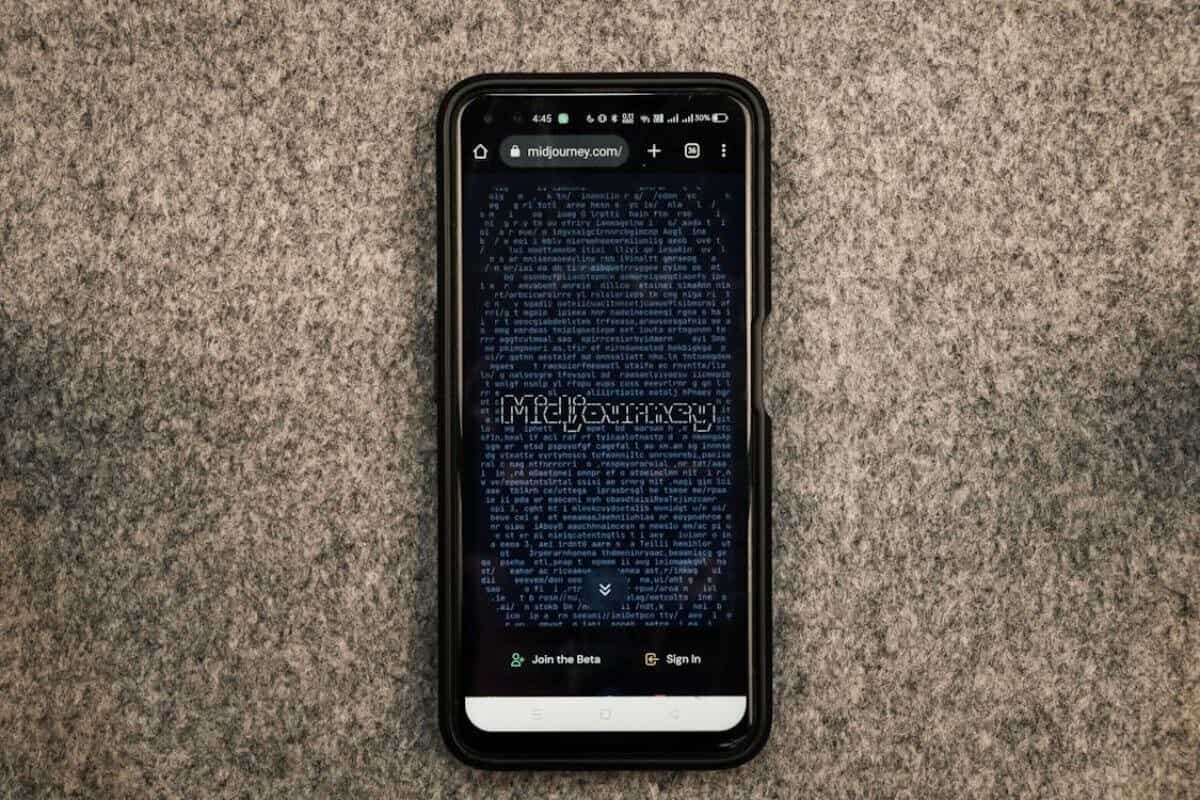Creators and businesses are leaning heavily on AI-image generation tools like Midjourney, DALL·E, and Canva for fast, cost-effective visuals.
But with that convenience comes a growing gray area, one that copyright law hasn’t fully caught up with.
- Are AI generated images copyrighted?
- If so, who holds the rights?
- Is it legal to use someone else’s AI-generated image if it’s out there on the web?
- Can you legally sell or repurpose an AI-generated image?
- And with so much AI art floating around, how can you even tell what’s AI-made and what’s human-made?
These are some of the issues that creators and brands are facing right now.
So, in this article, I’ll break down what current copyright laws actually say about AI-generated images and how to protect yourself legally when using or selling these images.
Can AI-Generated Images Be Copyrighted?
AI-generated images are the new frontier in creative expression.
DALL-E, MidJourney, and several similar image generation tools can produce stunning visuals in a matter of seconds. But are AI generated images copyrighted?
Currently, under U.S. copyright law, only works created by humans are eligible for copyright protection.
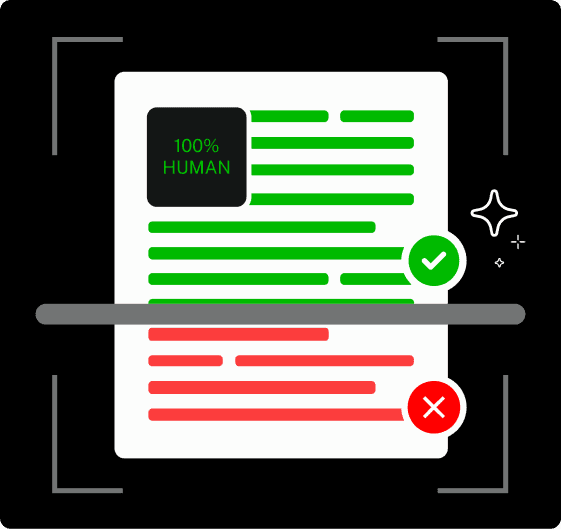
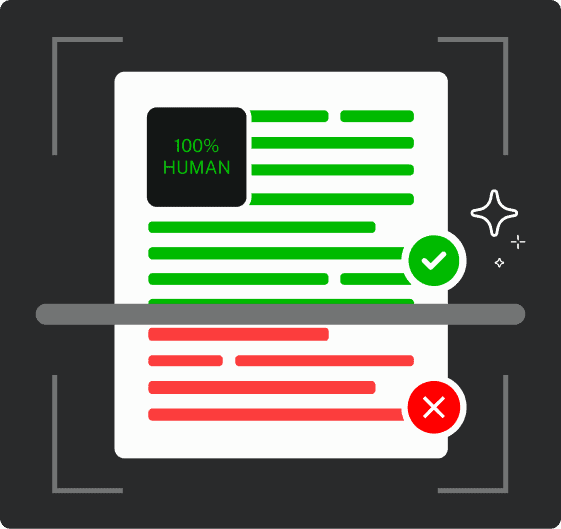
Never Worry About AI Detecting Your Texts Again. Undetectable AI Can Help You:
- Make your AI assisted writing appear human-like.
- Bypass all major AI detection tools with just one click.
- Use AI safely and confidently in school and work.
The law exists to protect the efforts of human creativity and labor.
The big question is whether an image generated by an algorithm that has no “human author” can qualify for copyright.
As of now, if a piece of art is made entirely by an AI, with no human input beyond the initial prompt, then it doesn’t meet the standard requirements for copyright protection.
Unlike the U.S., the UK does recognize copyright in “computer-generated works.”
So, are AI-generated images copyrighted in UK?
Yes, AI-generated works are protected for 50 years from the date of creation (unlike 70 years after the death of the author as it does with human-created art).
What Copyright Means in Art & Intellectual Property
Copyright protects original works of authorship.
It grants the creator exclusive rights to use, reproduce, and distribute their work and prevents unauthorized duplication.
A painting, a digital illustration, a piece of poetry, or a music composition, for example, can be copyrighted if it’s the original result of human creativity and fixed in a tangible form.
Copyright laws also control how your work is used and how others interact with it.
You own the right to determine whether your work is sold, displayed, altered, or used commercially.
How AI-Generated Art Differs From Human-Created Art
AI-generated art is fundamentally different from human-created art because of the process.
In human art, there’s often an emotional or intellectual component.
An artist draws from personal experience, emotion, or intention. Their work is a reflection of their consciousness and a vision, which is what copyright law seeks to protect.
AI, on the other hand, relies on algorithms to generate images based on the data it’s been trained on.
These models are not conscious. They don’t have emotions or personal experiences to draw from.
AI’s “creativity” is essentially an outcome of pattern recognition that blends data from millions of sources into something new but without intentionality.
Current Copyright Laws on AI-Generated Images
Copyright law was never designed with machines in mind, it was built around human creators.
So, what happens when an image is created by an algorithm and not a person? Are AI generated images copyrighted?
Under current copyright laws in the U.S., for a work to be eligible for protection, it must be:
- Original
- Fixed in a tangible medium
- Created by a human being
Copyright law doesn’t recognize machines or AI as creators because, well, they lack intent and creativity in the way humans do.
Images solely generated by AI (no human input beyond the initial prompt) don’t qualify for copyright.
A simple example would be using a tool like DALL-E to create an image based on a text description.
If the AI produces an image without significant human involvement, it’s not eligible for copyright protection.
Copyright Laws When AI and Human Effort are Combined
What if you, as the human user, are actively involved in the creative process?
In this case, you may have a valid claim to copyright because you’re seen as the “author” who guided the process.
However, when the contributions of both humans and machines are closely linked, a work’s eligibility for copyright depends on the level of influence the human author had.
The U.S. The Copyright Office, in 2022 granted copyright to Zarya of the Dawn, a graphic novel generated using the AI tool Midjourney.
However, the registration was later partially canceled when the office determined the images lacked human authorship, as they were generated by AI from text prompts.
The office clarified that while the text and arrangement were protected, the images were not due to insufficient human creativity.
When AI and humans collaborate, there’s a fine line that has legal experts scratching their heads and, frankly, where things are still very much in flux.
Who Owns AI-Generated Art?
While the debate of “Are AI generated images copyrighted?” has partially settled, creators now have a much bigger question: Who owns AI-generated art?
Protection under the Copyright Act requires the following: the work must be original, fixed in a tangible medium, and exhibit a minimal amount of creativity.
Section 306 of the US Copyright Act explicitly protects “original works of authorship,” implying a human creator is involved.
The U.S. Copyright Office states it will only register a work created by a human being, so under current law, AI-generated art has no recognized owner.
There’s a risk of potential copyright infringement in AI-generated art, where machine learning could use copyrighted content that infringes on the rights of original creators.
Getty Images has filed two lawsuits against Stability AI for copyright infringement.
It accuses the company of using millions of copyrighted images and metadata to train its Stable Diffusion generator without permission and seeks up to $150,000 per infringed work, which could result in a potential $1.8 trillion payout.
However, if we talk about the terms of use of AI tools used to generate art, like DALL-E, they specify that creators retain ownership of their input and are granted the rights to the output.
As per the terms, the person who provides the prompt to generate an image becomes the owner of that image, regardless of whether it has copyright protection or not.
How AI Image Detection Helps With Copyright Issues
Normally, copyright is straightforward: If you create something, you own it—simple as that.
But when images are AI-generated, you are left wondering if you’re violating someone else’s rights.
Or is the image itself free from any traditional copyright since it was created by a machine?
An AI image detector analyzes the metadata and visual features of an image and compares it with existing copyrighted works to determine whether it was generated by an AI tool.
One exceptional use of an AI detection tool is in instances where AI-generated images have been misused.
For example, you can use Undetectable AI Image Detector to catch:
- Synthetic media images that alter or fabricate real people into false situations
- Fake IDs used to generate fake identification documents
- Fake photos of incidents for fraudulent insurance claims
- Fabricate evidence for false reports or legal claims
- Misinformation graphics
- AI art
- Impersonation photos
Undetectable AI Image Detector accurately identifies images generated through TruthScan, DALL-E, Stable Diffusion, MidJourney, Ideogram, or newer tools like Flux and Bing Image Creator.
Why TruthScan Works Better for Business Use
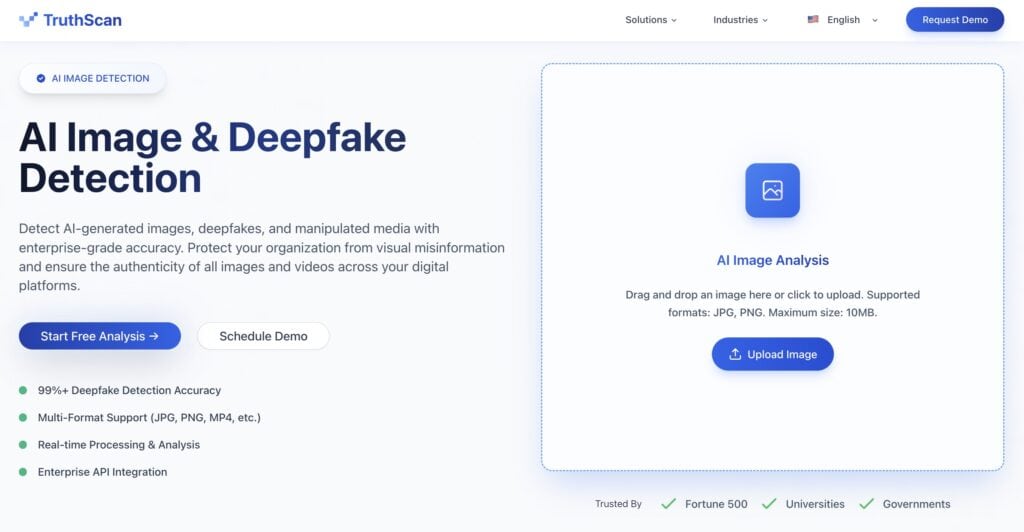
For expanded detection capabilities, TruthScan’s AI Image Detector is another tool worth having in your legal and creative toolkit.
It uses advanced forensic analysis to detect not just AI-generated images, but also manipulated media and deepfakes that might slip past surface-level checks.
This is especially important for creators and businesses navigating copyright gray areas — ensuring that the images they use are authentic, properly licensed, and free from hidden legal risks.
When used alongside tools like Undetectable AI, TruthScan gives you an extra layer of protection in an evolving legal landscape.
Deepfake Detection for Verifying Authorship and Originality
When questions of ownership or manipulation arise, Undetectable AI’s Deepfake Detection helps you verify the authenticity and origin of image and video content.
It’s built to analyze frame-level patterns, lighting inconsistencies, and voice or motion irregularities that reveal whether a visual was artificially generated or tampered with.
By scanning visual files in seconds, Deepfake Detection highlights areas that may have been digitally altered and provides a confidence score showing how likely the content is synthetic.
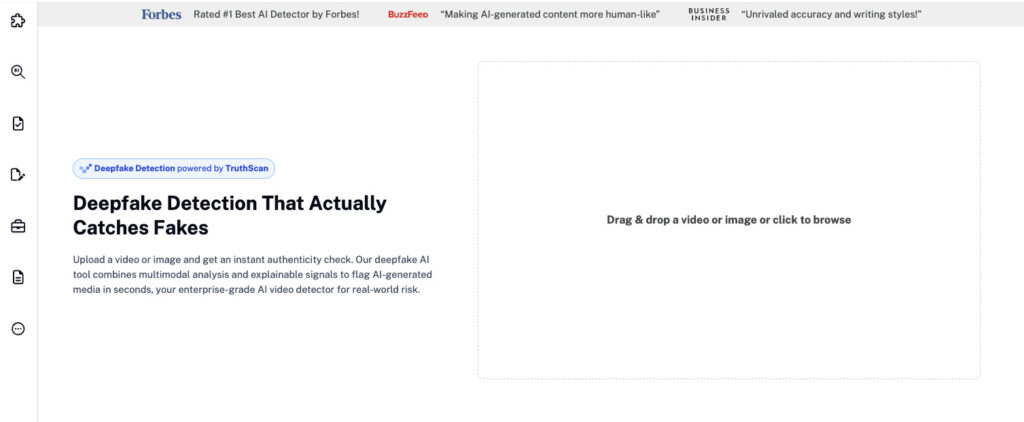
For creators, businesses, and legal teams, it’s an invaluable safeguard against false authorship claims, manipulated visuals, and AI-generated fakes circulating as original work.
How to Use AI Image Detector to Check Image Authenticity
Here’s a quick, step-by-step guide to using Undetectable AI Image Detector:
- Head to the Undetectable AI’s AI Image Detector. You’ll land on a clean, user-friendly page with a prominent box in the center that says, “Click to Upload or Drag & Drop Image.”
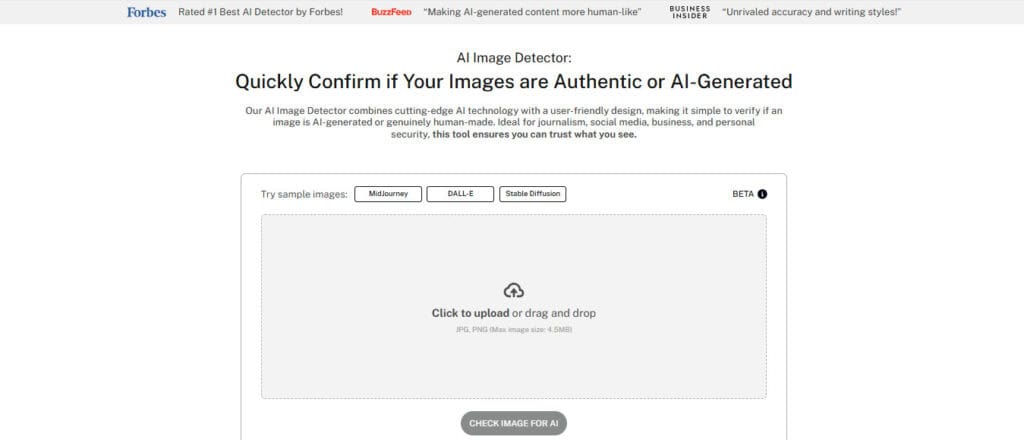
2. Either click on the box to browse for your image or simply drag and drop your image file into the box.
3. After you upload your image, notice that the “Check Image for AI” button, which was initially grey, will now turn black and become clickable.
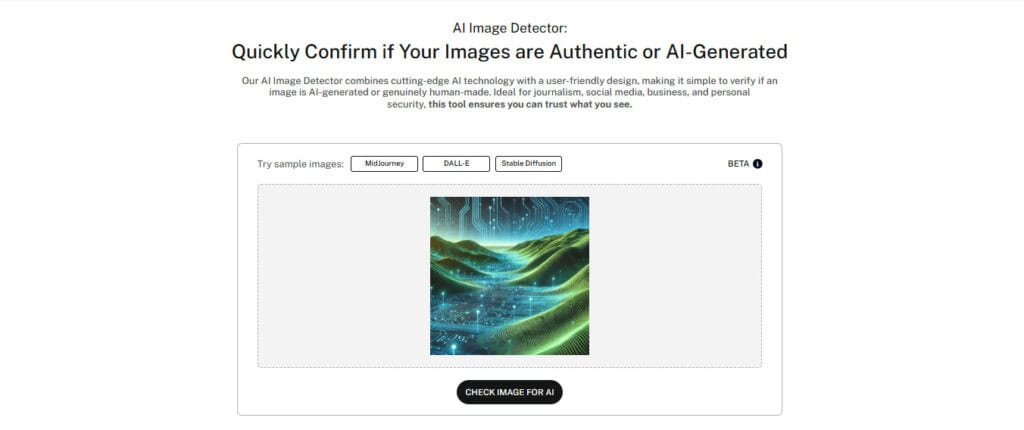
4. Now, click the newly activated button that says “Check Image for AI” so the tool can start analyzing your image.
5. After a few moments, the tool will give you a result. For example, here we see the text: “100% AI: This image is likely created by AI.” This result gives you clear insight into whether your image was generated by an artificial intelligence model.
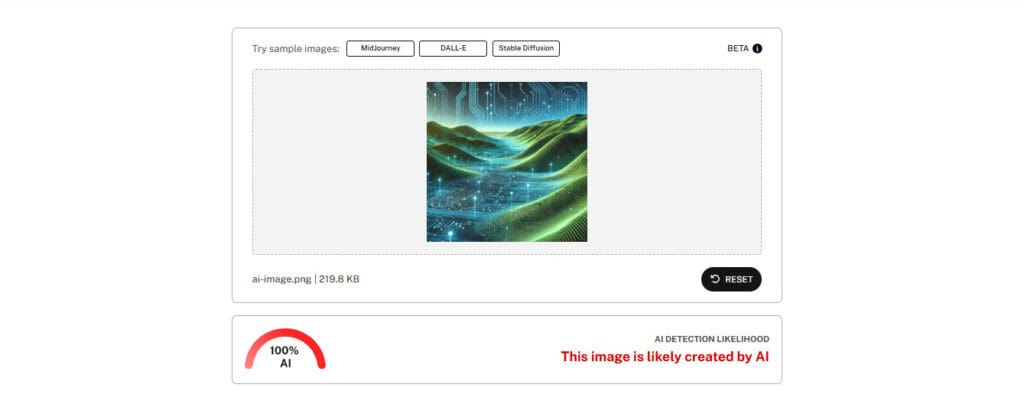
Can You Monetize AI-Generated Art Without Copyright?
Can you actually make money from AI art, even if it doesn’t have traditional copyright protection?
The short answer is that it depends.
As of now, AI-generated art does not have the same copyright protection as human-created art.
So, if the AI does the majority of the creative work, technically, there’s no traditional copyright to monetize.
However, you can still sell AI-generated art as long as it is licensed with the app you’re using.
Take Midjourney, for example. If you’re on a paid plan and you created the image yourself, then yes, you can use it commercially.
But if you’re using the free version or trying to use someone else’s image? That’s a no-go for commercial use.
And just a heads-up: Intellectual Property laws still apply to AI-generated images.
So even if an AI gives you a picture of Mickey Mouse, it doesn’t mean you can slap it on a t-shirt and start selling it, Disney still owns those rights.
Selling AI Art on Marketplaces (What’s Allowed & What’s Not)
The rules about selling AI-generated art vary depending on where you’re listing it.
Creators often establish formal business entities such as LLCs to protect themselves legally and financially when selling AI art commercially, helping to manage rights and responsibilities more clearly.
Before registering, it’s important to review state-specific requirements and choose the best state for LLC formation that aligns with your business needs, as regulations and benefits can vary significantly across states.
Different online marketplaces have specific terms of service that influence whether you can sell AI art and how you can do it.
Etsy allows sellers to use AI tools along with their own ideas (prompts) to create art such that the artist is still the one making important decisions.
While the platform allows artists to use AI in their creative process, they do not allow the sale of just the AI prompts (the text or instructions used to generate art) without the final artwork.
Selling AI art as non-fungible tokens (NFTs) is another viable way to monetize.
OpenSea permits AI-generated art to be minted and sold as NFTs, provided the seller has the legal right to use the content.
The Pond5 Contributor Agreement, however, specifies that you must own the content you upload to the platform.
Therefore, AI-generated content cannot be uploaded or licensed by contributors on their marketplace.
Enhance your experience by trying our AI Detector and Humanizer in the widget below!
Conclusion
The question “Are AI generated images copyrighted?” doesn’t have a one-size-fits-all answer yet.
The legal system is still catching up with the rapid evolution of AI tools.
For now, copyright protection largely favors works with significant human involvement and leaves purely machine-generated images in a legal gray area.
If you’re using or selling AI-generated visuals, it’s up to you to understand the licensing terms and respect intellectual property laws.
For creators, Undetectable AI Image Detector is a handy tool that helps you avoid unintentional copyright violations by flagging AI-generated content before it causes problems.
It also identifies AI manipulated media and fraudulent imagery.
Try the Undetectable AI Image Detector for free today.
